Despite the obvious dangers, the kitchen is an important place for your toddler/preschooler and you to spend time together. Here are 25+ reasons (and fun activities), why you should encourage your little one to help prepare and cook meals.
SOCIAL & LIFE SKILLS
1. Co-operation – Whether working with you alone or other children, teamwork in the kitchen will give children a sense of sharing and an understanding of how to interact with others in groups, while trying to achieve a shared goal.
2. Patience – Cooking is a great way to demonstrate that it takes time and commitment to create something special and that a delicious meal doesn’t just miraculously appear on a plate in front of you. It’s important for children to understand there are processes involved and some things take longer than others.
3. Gratitude – understanding these processes, helps develop a child’s appreciation for what you as parents do daily in order to prepare meals, which may, in turn, lead to better cooperation when it comes to actually consuming food, helping to minimise waste and cleaning up.
4. Independence - As children learn to make something for themselves, they develop emotionally with a sense of pride and a positive self-image.
5. Responsibility – children feel a real sense of achievement when they accomplish a task that you specifically set for them. If you’re unsure about how to introduce your toddler into the kitchen and are not comfortable with arming them with sharps and having them taking over “chopping duties” just yet, here are some suggestions for ensuring they still feel included – ask your little one to help with:
- Getting items from the fridge and pantry
- Washing fruit & vegetables
- Sequencing ingredients i.e. lining them up in order of use within the recipe
- Handing over different utensils
- Measuring/weighing ingredients
- Stirring, whisking, tossing, shaking
- Pushing buttons on child-friendly appliances, e.g. Balmix, juicer, mixmasters, etc.
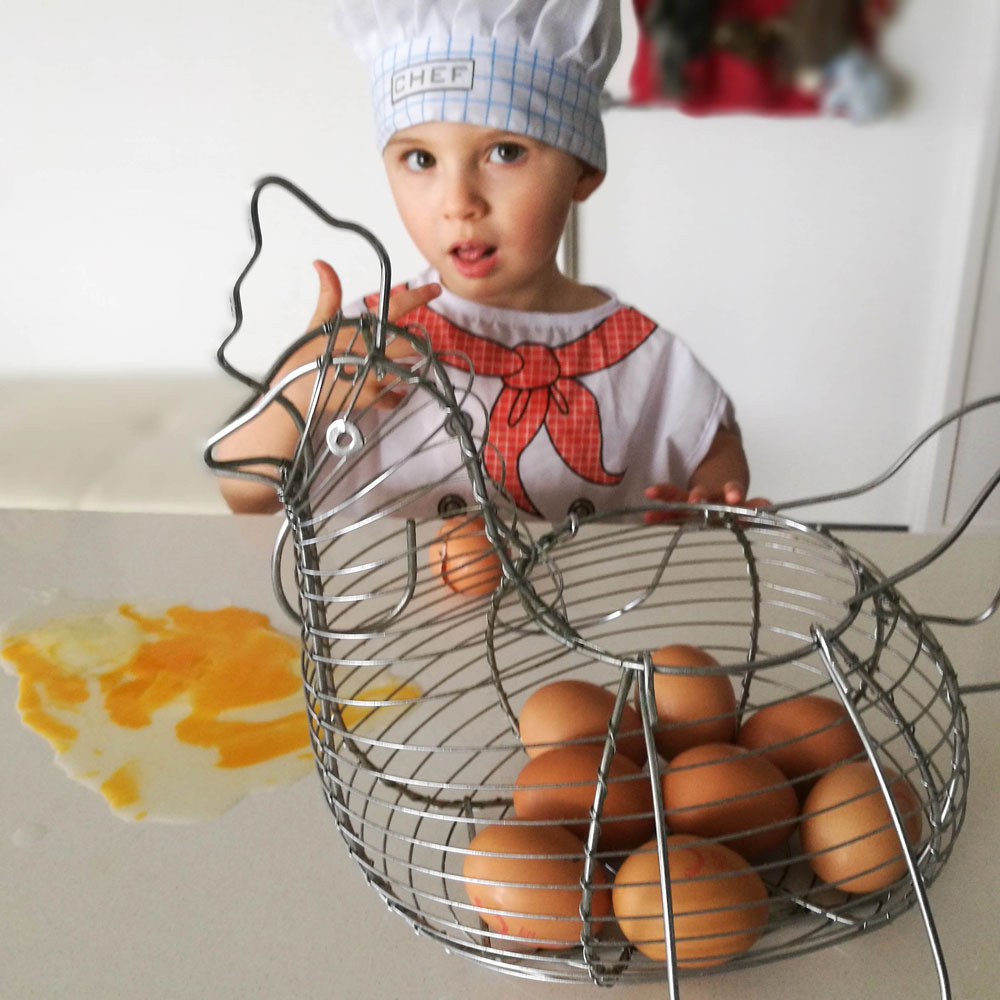
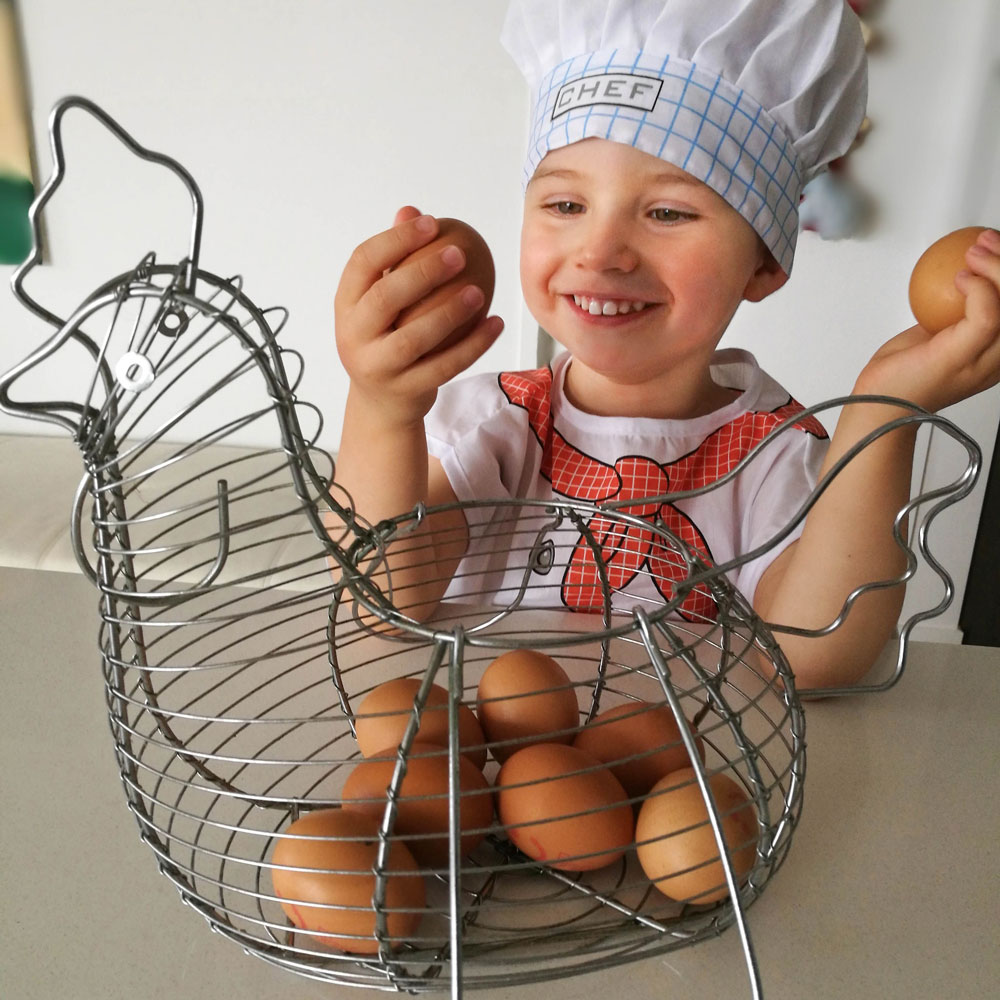
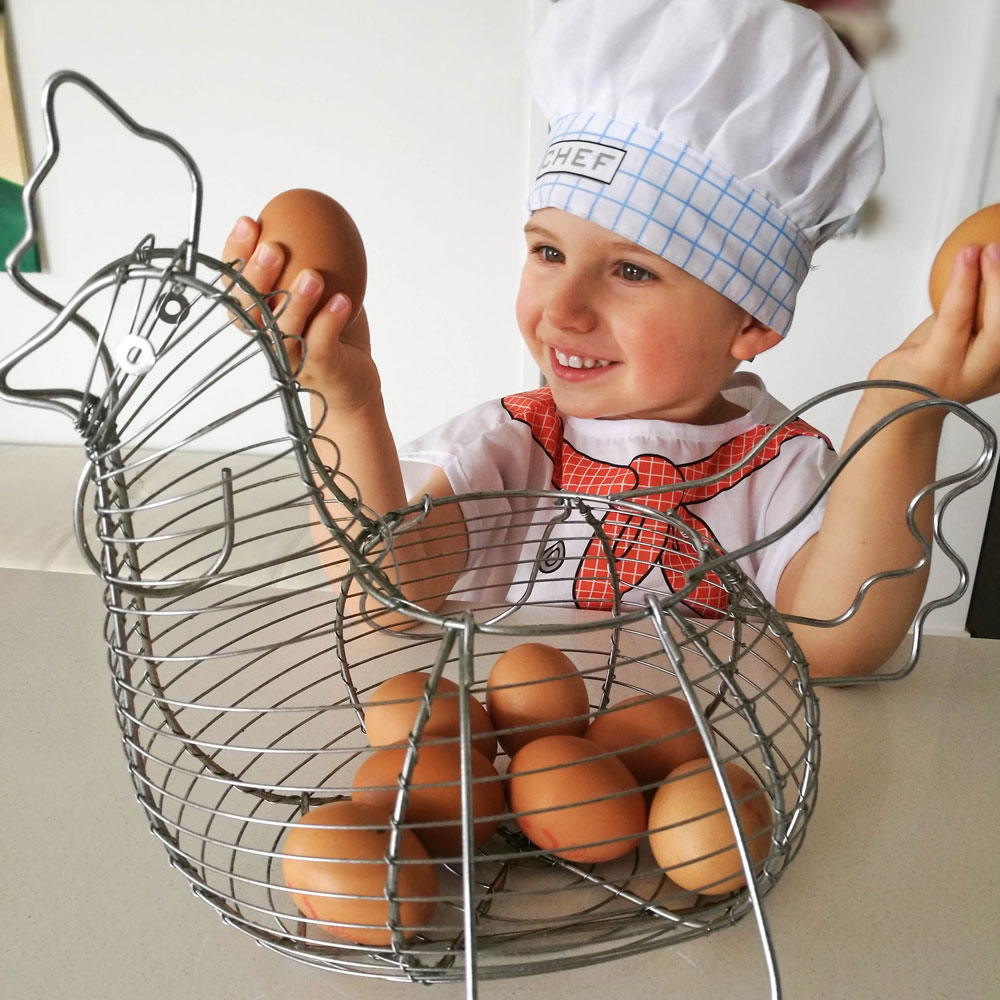
6. Family fun – No matter what you’re cooking, spending time together in the kitchen is a great bonding experience. Allow your little one to be adventurous and expect some mess to be made. It’s not just the little ones that can have fun. It’s important for your children to see your playfulness and ability to let go and not be serious all the time.
7. Adventurousness – The kitchen is often considered to be a forbidden zone in the house for little ones, for obvious reasons. So perhaps you can use this to your advantage and emphasize just how special an occasion it is to be spending time and working together in the otherwise off-limits area. To add to the sense of adventure, choose meals that allow your little one to have the freedom to play and not have to stick to the particulars of a recipe. For example, let them choose their own Pizza toppings or fruit salad ingredients.
8. Bonding - It’s also a great way to spend quality time with your child and share the responsibility of, and interest in, cooking.
9. Self-Identity - By acknowledging your children’s successes, we help them recognise their inner strengths, so they can define themselves accordingly.
10. Experiences not things - Happiness is derived from experiences, not things according to Psychology Professor Thomas Gilovich from Cornell University who has conducted four major studies over the past decades.
HEALTH & SAFETY
11. Cooking is a fun way to encourage healthy eating habits, as children are more likely to try healthy food that they have helped to cook.
12. It’s not screen time (unless of course, you’re reading recipes off your device). Active, practical, playful time in the kitchen is a healthy alternative to spending time in front of any screen.
13. Understanding the differences between “good” and “not as good” food choices and the different processes they undertake to get to market.
ACTIVITY: Growing fruit and vegetables in your garden (or even pots) can help children understand the value of “fresh” produce, the life cycle of plants, the difference between the seasons, and the various ways in which food is grown, e.g. in the ground, on trees, etc.
HYGIENE & CLEANLINESS
14. There’s a ritual to preparing a meal, no matter what you’re cooking. An important part of that ritual is preparing to prepare food by washing hands beforehand (and tidying up afterwards).
15. Another part of the ritual can be the “donning of the apron”. Ultimately used to protect and respect the clothing beneath, the apron can be a nice reminder of all that cooking together represents for you. If you don’t have one, it can be a thoughtful gift to help get them excited about cooking, next time.
16. Washing fruit and veggies is an essential step in the preparation of food and one that little ones can easily be apart of.
17. Safety – During food preparation, you can teach children the importance of safety when dealing with food, utensils and appliances. As well as working with electricity near wet areas, etc.
As scary as it may be to watch your child yield a sharp knife, being actively involved with food preparation will help large and fine motor skills, as well as enhance eye-hand coordination. The key is to give them easy chopping duties and progress in time. Don’t start out asking them to chop a pumpkin! Use a plastic knife and cut a banana. As your child’s confidence grows you can progress to more advanced/sophisticated (read - dangerous) tools.
18. If you want to encourage that sense of playfulness but concerned about making too much mess take the activity outside.
HANDS-ON LEARNING & COGNITIVE DEVELOPMENT
19. Problem Solving – Like all things in life not everything goes according to plan, even when you’re following a precise recipe. Note what’s gone wrong and how you can fix, improve, improvise. For example, do you not have all or enough of the prescribed ingredients? Is there an alternative ingredient you can substitute?
20. Motor skills – Increase your child’s coordination and muscle strength by exploring various materials and tools. Rolling and squishing, for example, encourages large muscle strength.
GAME: Use different utensils to pick-up small objects, to encourage the use of the pincer grasp (between the thumb and index finger) as well as hand-eye coordination. e.g: - Chopsticks to pick-up grapes
21. Sensory skills – By applying the five senses children are exposed to and able to identify different foods.
Taste – the most obvious of senses when it comes to cooking, tasting different foods can teach children the difference between the five specific taste receptors: saltiness, sweetness, bitterness, sourness and savouriness or “Umami”.
GAME: Blindfold your child and see if they can guess what flavour or food they are tasting.
Hear – There’s plenty of noises in the kitchen that can help stimulate a child’s curiosity. They may well be familiar with the banging of pots and pans or the sounds made by different levels of liquids in glass jars, but you can also discuss the various noises of running or boiling water, popping corn or the difference between “whisper quiet” Vs. loud appliances.
Touch – It’s important to allow children to get their hands dirty and feel the various textures; the difference between wet and dry mixtures; big and heavy versus small and lightweight ingredients, especially for kinesthetic learners.
GAME: Blindfold your child and see if they can guess what flavour or food they are tasting. Fruit such as pineapples and jackfruit can easily demonstrate roughness, while kiwi-fruit are fuzzy compared to your everyday “smooth” fruit and vegetables.
Smell – Just about every parent can tell you the joy that comes from the aroma of a morning coffee.
ACTIVITY: Growing herbs and spices in your own garden (or window sill) is an easy way to help children understand where some food comes from and help them get involved in the cooking process.
GAME: Blindfold your child and see if they can guess what flavour or food they are smelling.
Sight - Obviously, kids can learn about different coloured fruit and vegetables, as well as see the various textures, states, shapes, patterns and sizes.
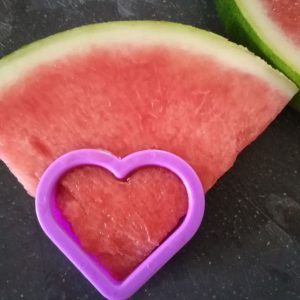
TIP: Use your child's playdoh shape cutters to create an interesting fruit salad or make vegetables or even cheese more compelling.
GAME: Match the colour of the fruit to a coloured piece of paper or bowl/cup. Match the shape of the fruit to corresponding images, e.g. stars, semi/circles, ovals, crescents. Sort differently sized ingredients in order of big to small.
ACTIVITY: Draw still-life’s of fruit and vegetables – inside and out.
SOCIO-CULTURAL AWARENESS
22. Exploring the origins of food and ingredients gives you the chance to explore different cultures and their cuisines. It’s an opportunity to discuss how food is consumed throughout the world. Some cultures relish in eating with their hands, while others use chopsticks, for example.
Understanding where foods come from can spur conversations about geography and seasonal produce (Northern Vs. Southern hemispheres), as well as “Tropical” fruit compared to “Forrest” fruits and nuts.
It’s also a great opportunity to discuss the role of Farmers in our community and the differences between rural and urban life. You can also discuss the various types of agriculture and farming, i.e. dairy farming vs. cattle farming vs. horticulture.
ACTIVITY: Pick an ethnic theme and celebrate a different culture through their national costume and dish.
Some examples include:
Japanese – Sushi
Mexican – Tacos
French – crepes
Vietnamese – rice paper rolls
Italian – pasta, pizza, gelato
What's your favourite recipe? Let us know via our Facebook Page.


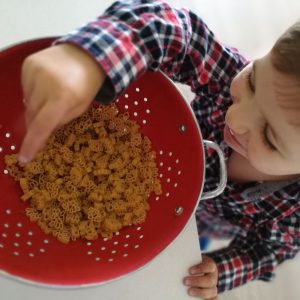

23. MATHEMATICS
Following recipe directions mean understanding measurements, numbers and counting ingredient amounts. Addition and subtraction can be included in your conversations, as well as simple fractions and multiplication.
GAME: Layout measuring cups and/or spoons randomly and re-organise them into order, smallest to biggest.
ACTIVITY: Get your child to cut a piece of fruit, a slice of watermelon, for example, (or even a pizza) into halves, then quarters and so on.
24. SCIENCE
Hypothesising – Cooking offers an opportunity for children to make predictions and observations. One of the easiest ways to demonstrate the chemistry of cooking is to observe the effects of hot and cold and discuss the properties of matter and the various states of liquid/gas/solids.
ACTIVITY: Observe solid ice cubes as they melt into liquid. Pour the liquid into a saucepan and boil the water – observe the steam as gas and try and collect the condensation noting the matter’s return to liquid. Freeze the liquid and repeat to demonstrate the cycle again.
25. LANGUAGE & COMPREHENSION
Reading a recipe together doesn’t just expand vocabulary, but following instructions and participating in the process helps build comprehension.
Food activities provide a rich opportunity to improve language skills and learn the names of foods, utensils and processes. You can also introduce what items are called in various languages/cultures and how they differ. E.g. Aubergine vs. Egg Plant.
GAME: Play memory games. Write a shopping list together that includes the necessary ingredients for your recipe. While shopping see if your child can remember any of the items on the list. Re-fresh their memory when unpacking the trolley and then again, unpacking your groceries at home. As part of your meal preparation, ask your child to recall and gather the necessary ingredients.
26. CREATIVITY
Whoever said “don’t play with your food” didn’t know what they were missing. Cooking is, as we’ve demonstrated, a fantastic opportunity for your little one to learn a great many things, but perhaps most importantly its an opportunity to have fun with you, connect with you on the same playful level, and find their inspiration, curiosity and creativity through food. Encourage them to be adventurous and create edible art. Let them explore shapes, colours, patterns and think beyond what a recipe may dictate.
WHAT TO COOK?
Almost everything that involves a toddler involves time and patience. So it’s a good idea to choose short and simple cooking tasks that match your toddler’s skills and attention span.
Here are a few suggestions:
STARTERS & SAVOURY SNACKS
Dips – Beetroot, Hummus,
Guacamole (and corn chips)
Sweet potato and/or parsnip chips
Banana chips (hydrater required)
Savoury vegetable muffins
Quiche
Spinach and Fetta "Sausage" rolls
Samosa
MAINS
Pizza
Alphabet, animal-shaped or shell Pasta
Layered vegetable or beef lasagne
Tacos
Sushi
Noodles
Fried Rice
Salad
Rice paper rolls
wraps
DESERTS & SWEET SNACKS
Healthy “protein” balls
Healthy fruit-filled muffins
Jelly with fruit chunks
Pancakes, pikelets and crepes
Fruit salad
DRINKS
Smoothies
Juices
We Love to hear From You!
Cooking with Kids
Let us know your tips and tricks or any reasons we may have missed!
Join the conversation on our Facebook community and follow @RobertUlysses on Instagram.
